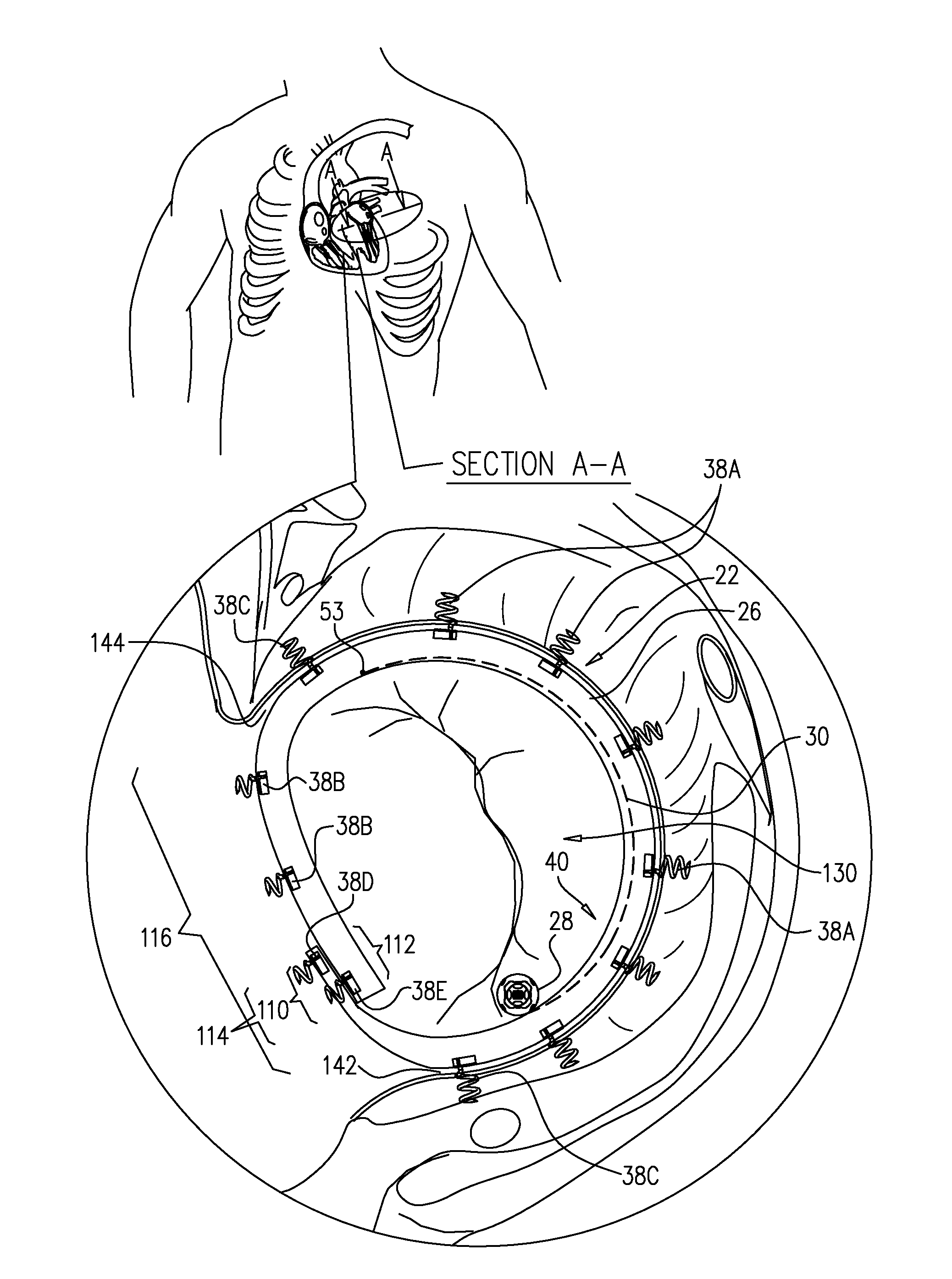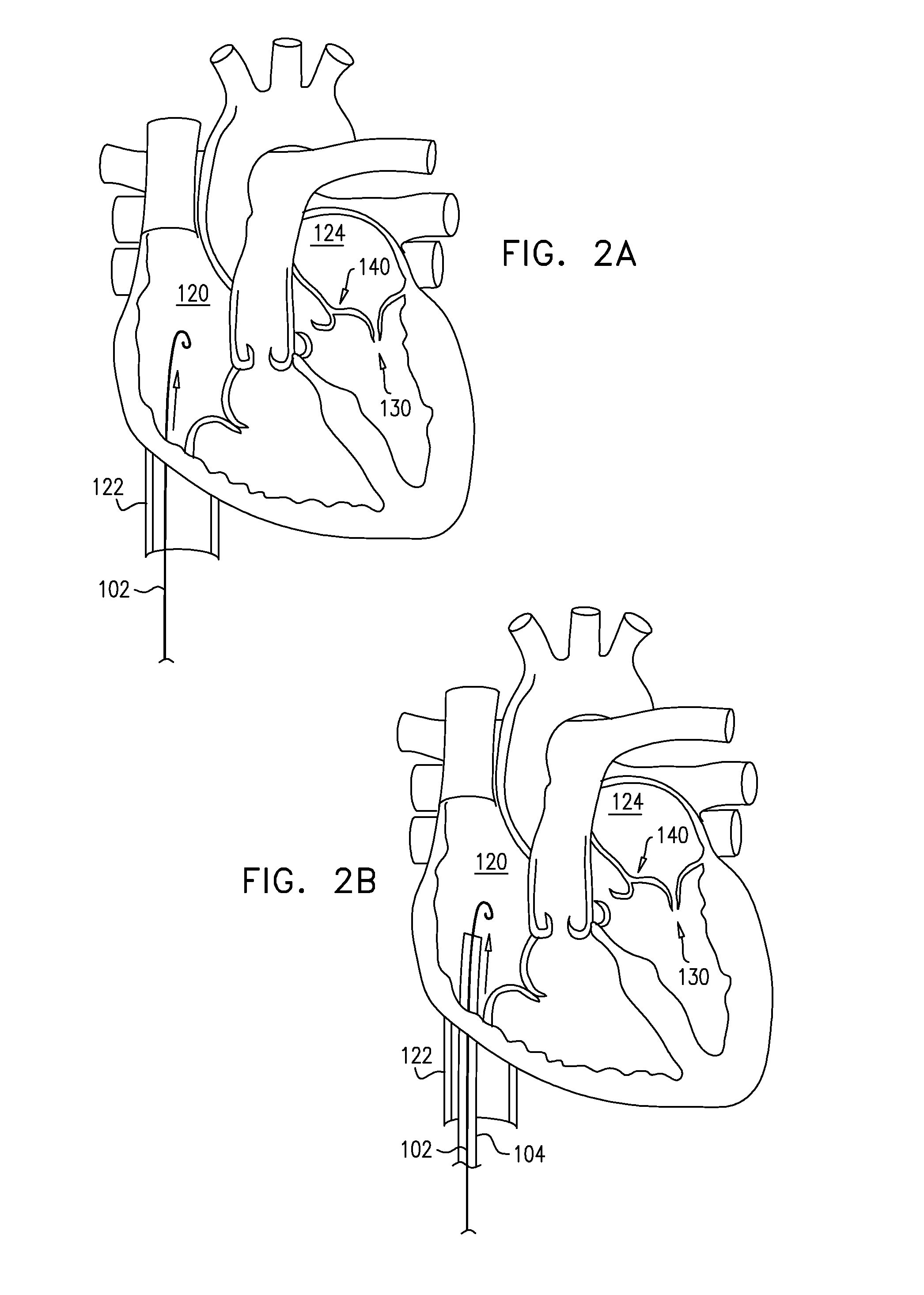Closed band for percutaneous annuloplasty
a technology of annuloplasty and closed band, applied in the field of valve repair, can solve the problems of reducing cardiac output, reducing total stroke volume, and ultimate weakening of the left ventricl
- Summary
- Abstract
- Description
- Claims
- Application Information
AI Technical Summary
Benefits of technology
Problems solved by technology
Method used
Image
Examples
Embodiment Construction
[0208]FIG. 1 is a schematic illustration of a system 20 for repairing a dilated atrioventricular valve, such as a mitral valve or a tricuspid valve, in accordance with an application of the present invention. System 20 comprises an adjustable implantable structure 22, shown in FIG. 1 in a straight, relaxed, non-contracted state, and an anchor deployment manipulator 24 (shown in FIGS. 2G-H). For some applications, implantable structure 22 is configured to be deployed as an annuloplasty ring, while for other applications, implantable structure 22 is configured to be deployed as a base ring to which a prosthetic valve is coupled, such as described hereinbelow with reference to FIG. 15A-B or 16. Implantable structure 22 comprises a flexible sleeve 26. Anchor deployment manipulator 24 is advanced into sleeve 26, as shown in FIGS. 2G-H, and, from within the sleeve, deploys tissue anchors through a wall of the sleeve into cardiac tissue, thereby anchoring the ring around at least a portion...
PUM
 Login to View More
Login to View More Abstract
Description
Claims
Application Information
 Login to View More
Login to View More - R&D
- Intellectual Property
- Life Sciences
- Materials
- Tech Scout
- Unparalleled Data Quality
- Higher Quality Content
- 60% Fewer Hallucinations
Browse by: Latest US Patents, China's latest patents, Technical Efficacy Thesaurus, Application Domain, Technology Topic, Popular Technical Reports.
© 2025 PatSnap. All rights reserved.Legal|Privacy policy|Modern Slavery Act Transparency Statement|Sitemap|About US| Contact US: help@patsnap.com



